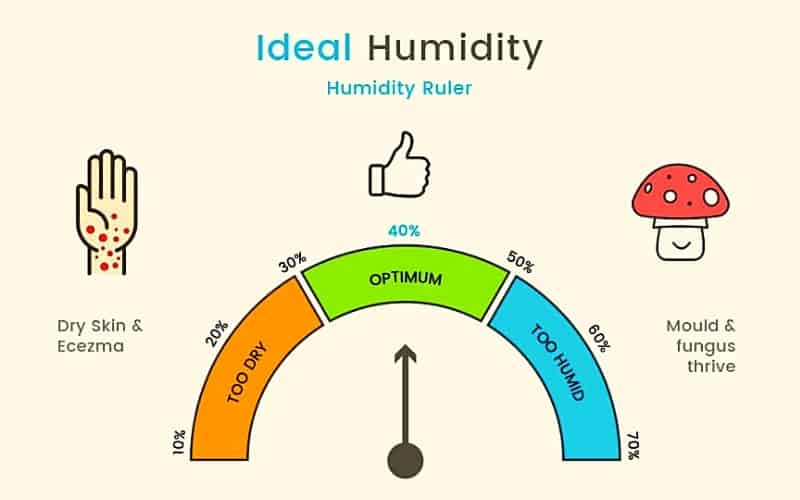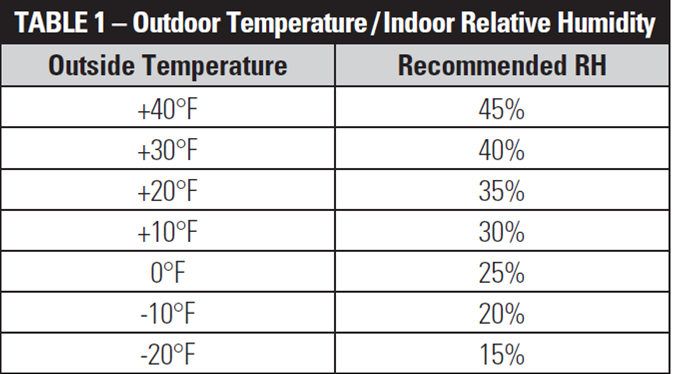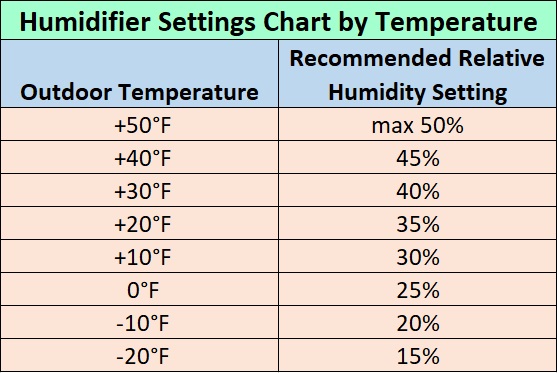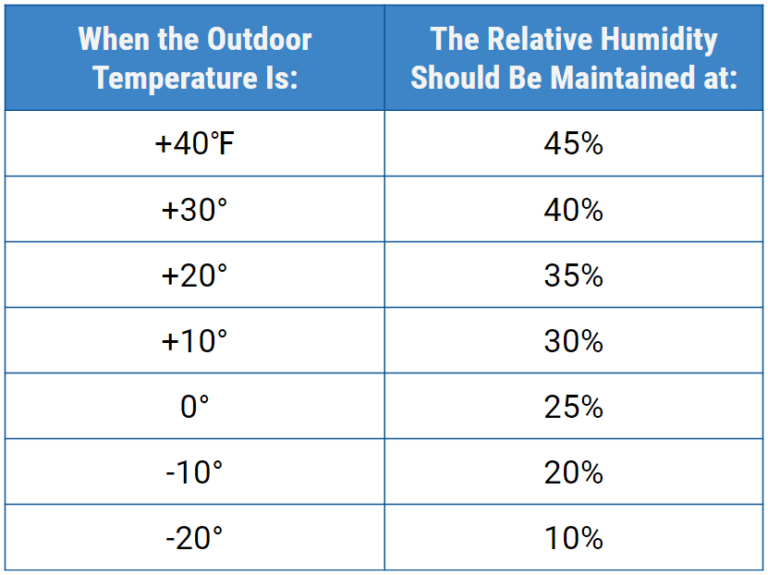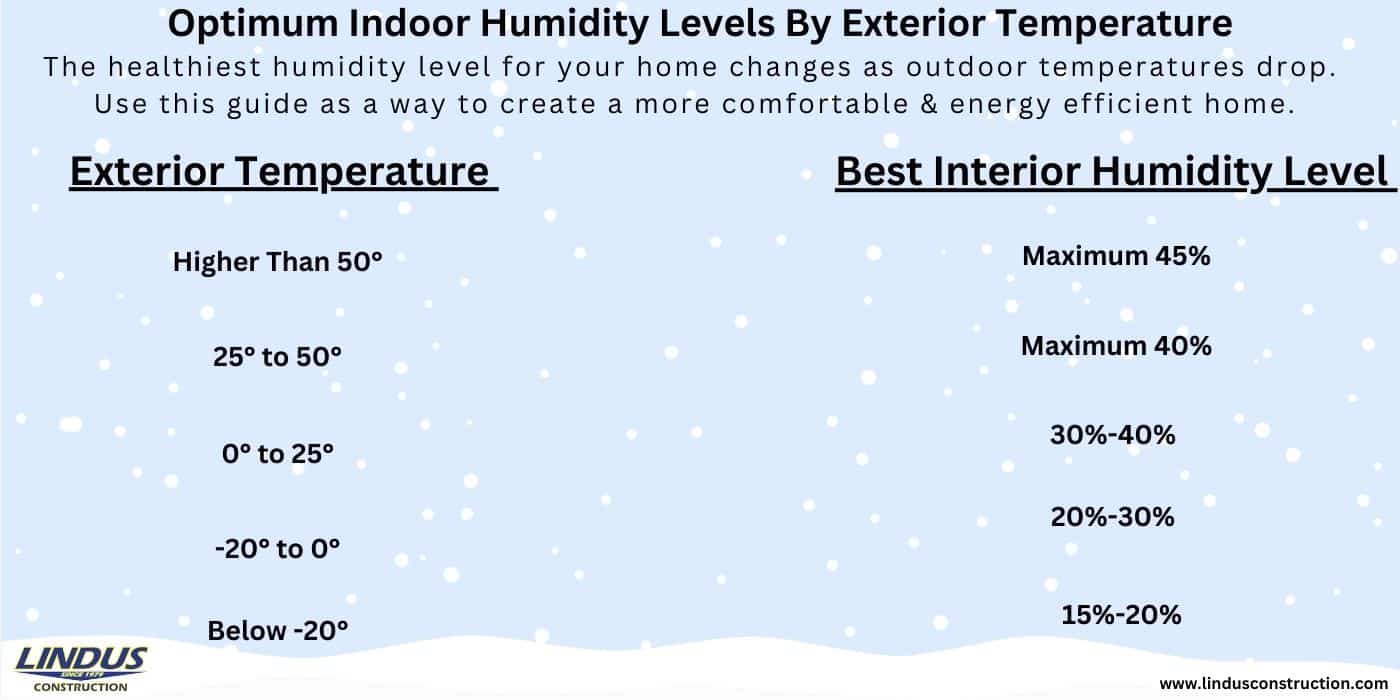What Is The Perfect Humidity For A House

The Quest for Comfort: Finding the Perfect Humidity Level for Your Home
Maintaining a comfortable and healthy indoor environment is a top priority for homeowners, HVAC technicians, and facility managers alike. While temperature often takes center stage, humidity plays an equally crucial role. Too much or too little moisture in the air can lead to a range of problems, impacting everything from your comfort and health to the structural integrity of your building. So, what exactly *is* the perfect humidity for a house, and how do you achieve it?
Understanding Humidity: Relative vs. Absolute
Before diving into ideal humidity levels, it's important to understand the different ways humidity is measured. The two most common terms you'll encounter are relative humidity (RH) and absolute humidity. Absolute humidity refers to the actual amount of water vapor present in the air, usually measured in grams of water per cubic meter of air. However, absolute humidity doesn't tell the whole story because the air's capacity to hold moisture changes with temperature. Warmer air can hold significantly more moisture than cold air.
This is where relative humidity (RH) comes in. RH is the percentage of water vapor present in the air compared to the maximum amount of moisture the air can hold at a given temperature. For example, if the air is holding half the maximum amount of moisture it can at a specific temperature, the relative humidity is 50%. RH is the more commonly used metric in HVAC because it directly relates to how the air *feels* to us.
The Ideal Humidity Range: A Sweet Spot for Comfort and Health
Most experts agree that the ideal relative humidity range for a home is between 30% and 60%. Within this broader range, a more specific target of 40% to 50% is often recommended for optimal comfort and health. This range represents a sweet spot where the benefits of balanced humidity are maximized, while the risks of excessive dryness or moisture are minimized.
Below 30% RH, you might experience dry skin, irritated sinuses, and increased susceptibility to respiratory infections. Wood furniture and flooring can also dry out and crack. Static electricity becomes more prevalent, leading to annoying shocks.
Above 60% RH, you create a breeding ground for mold, mildew, and dust mites. These allergens can trigger respiratory problems, asthma attacks, and other health issues. High humidity can also make the air feel stuffy and uncomfortable, even at relatively low temperatures. Condensation on windows and other surfaces can lead to water damage and structural problems.
Factors Affecting Humidity Levels: Inside and Out
Many factors can influence humidity levels inside your home. Some are external, while others are related to your daily activities. External factors include:
- Climate: Regions with humid climates naturally experience higher indoor humidity levels, especially during the summer months.
- Season: Humidity levels tend to be higher during the summer and lower during the winter, particularly in colder climates where heating systems dry out the air.
- Surrounding environment: Proximity to bodies of water, such as lakes or oceans, can increase humidity levels.
Internal factors that impact humidity include:
- Occupancy: The number of people living in a house can affect humidity, as each person exhales moisture throughout the day.
- Activities: Activities like showering, cooking, and laundry can significantly increase indoor humidity levels.
- Ventilation: Poor ventilation can trap moisture indoors, leading to higher humidity levels.
- Building materials: Certain building materials, such as concrete, can absorb and release moisture, affecting indoor humidity.
- HVAC system: Your heating and cooling system plays a crucial role in controlling humidity.
HVAC Solutions for Humidity Control: Dehumidifiers, Humidifiers, and More
Fortunately, there are several HVAC solutions available to help you maintain optimal humidity levels in your home. These solutions can be broadly categorized into dehumidifiers and humidifiers, each addressing a specific problem:
Dehumidifiers
Dehumidifiers remove excess moisture from the air, lowering the relative humidity. They are particularly useful in humid climates or during the summer months when indoor humidity levels tend to be high. There are two main types of dehumidifiers:
- Portable dehumidifiers: These are self-contained units that can be moved from room to room. They are a cost-effective option for addressing humidity problems in specific areas, such as basements or bathrooms. Portable dehumidifiers typically range in price from $100 to $500, depending on their size and features.
- Whole-house dehumidifiers: These are integrated into your HVAC system and dehumidify the entire home. They are more expensive than portable dehumidifiers, costing anywhere from $1,000 to $3,000 installed, but offer more consistent and efficient humidity control. They also require professional installation.
Humidifiers
Humidifiers add moisture to the air, increasing the relative humidity. They are commonly used during the winter months when heating systems dry out the air. Like dehumidifiers, humidifiers come in portable and whole-house varieties:
- Portable humidifiers: These units are similar to portable dehumidifiers and are suitable for humidifying individual rooms. They range in price from $30 to $200, depending on their capacity and features.
- Whole-house humidifiers: These are integrated into your furnace and humidify the entire home through the ductwork. They are more effective than portable humidifiers for maintaining consistent humidity levels throughout the house. Whole-house humidifiers typically cost between $300 and $1,000 installed. There are several types, including bypass, fan-powered, and steam humidifiers. A bypass humidifier is the least expensive, drawing air from the furnace. A fan-powered humidifier forces air through a water-soaked pad. Steam humidifiers are the most expensive, boiling water to create steam.
Integrated HVAC Systems
Modern HVAC systems often incorporate humidity control features directly into the air conditioner or heat pump. Some systems use variable-speed compressors and fans to more precisely control temperature and humidity levels. These systems can remove more moisture from the air when cooling, helping to maintain a comfortable humidity level even during humid weather. Others offer a "dry mode" designed specifically for dehumidification. These integrated systems often have higher upfront costs but can offer improved comfort and energy efficiency over the long term.
Monitoring Humidity: Investing in a Hygrometer
To effectively manage humidity levels in your home, it's essential to monitor them regularly. The easiest way to do this is by using a hygrometer, also known as a humidity meter. Hygrometers are relatively inexpensive and readily available at most hardware stores and online retailers. You can purchase a simple analog hygrometer for around $10 or a more sophisticated digital model with features like temperature readings and data logging for around $30-$50. Place hygrometers in different areas of your home to get a comprehensive understanding of humidity levels throughout the building.
Beyond HVAC: Simple Strategies for Humidity Control
In addition to HVAC solutions, there are several simple strategies you can use to control humidity levels in your home:
- Ventilate your home: Open windows and doors regularly to allow fresh air to circulate and remove excess moisture. Use exhaust fans in bathrooms and kitchens to vent steam and humidity to the outside.
- Fix leaks: Repair any leaks in your roof, plumbing, or foundation to prevent moisture from entering your home.
- Control moisture sources: Take steps to reduce moisture sources inside your home, such as using a dehumidifier in damp areas, drying clothes outside or in a well-ventilated area, and covering pots and pans while cooking.
- Properly insulate your home: Good insulation can help to prevent condensation and moisture buildup, especially in attics and basements.
The Importance of Professional Consultation
Choosing the right humidity control solution for your home can be complex. Factors such as your climate, the size of your home, and your individual needs and preferences all play a role. Consulting with a qualified HVAC technician can help you assess your specific situation and determine the best course of action. A professional can perform a thorough inspection of your home, recommend the appropriate equipment, and ensure that it is properly installed and maintained. They can also provide valuable advice on how to manage humidity levels effectively and efficiently.
By understanding the importance of humidity control and taking proactive steps to maintain optimal levels, you can create a more comfortable, healthy, and energy-efficient home for yourself and your family.
.jpg?width=3508&name=Humidity level chart (1).jpg)

